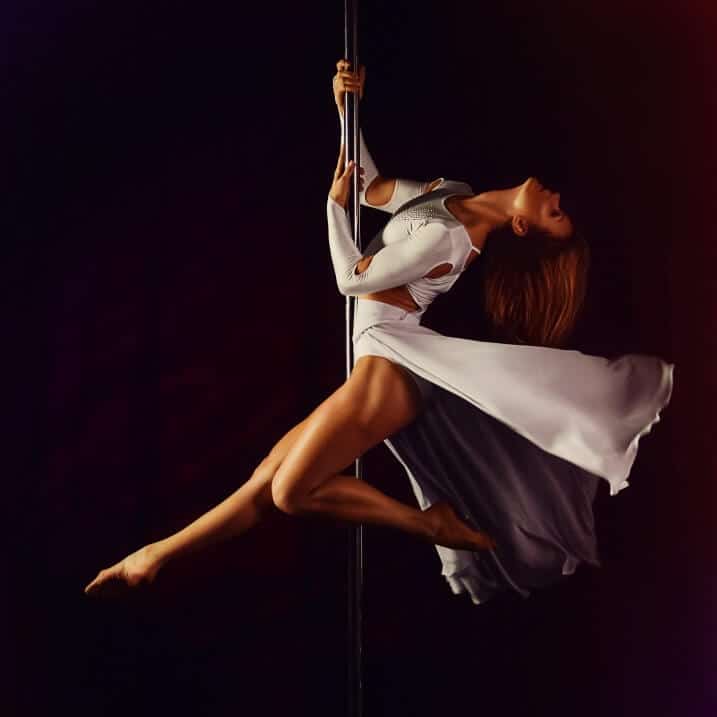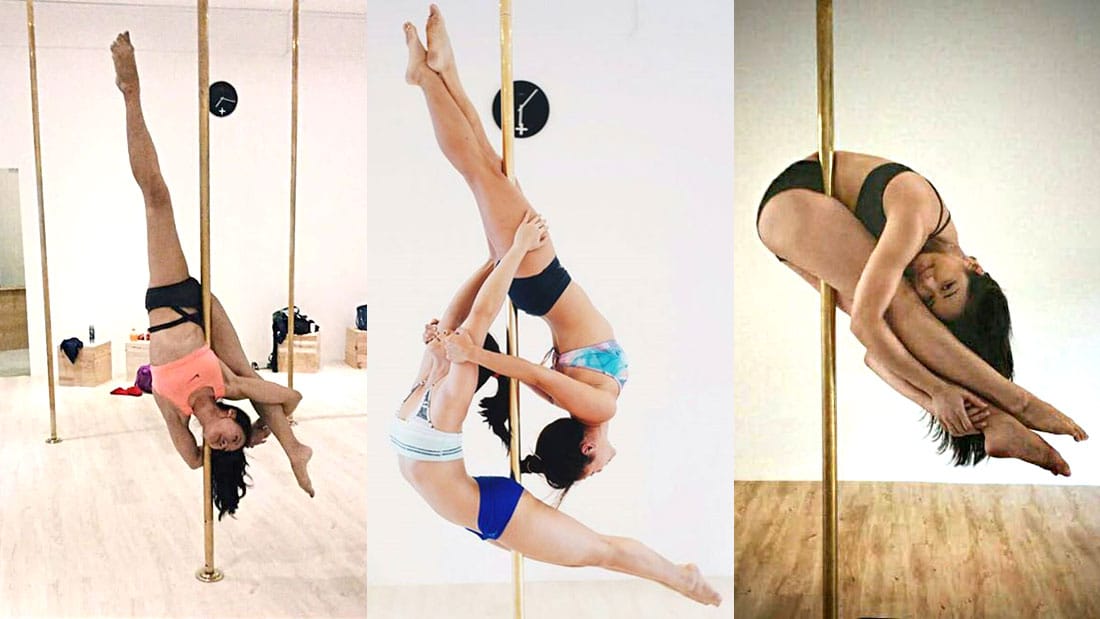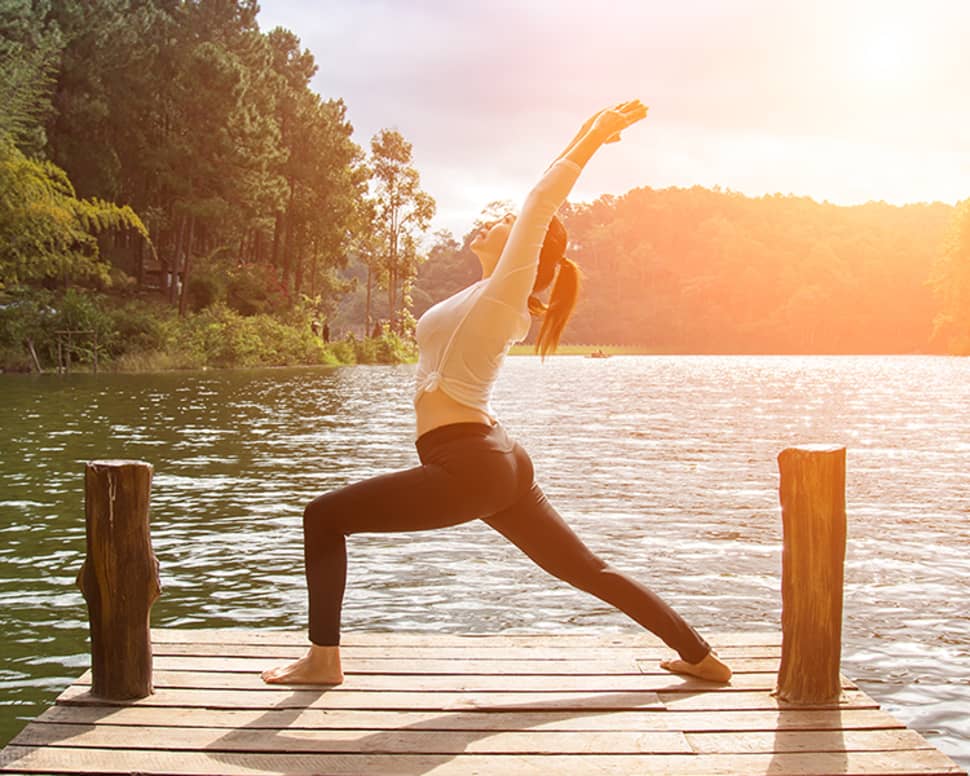One can use the support of the pole with the Iyengar yoga practice to make the perfect alignment of the body in yoga asana poses. The important yoga asanas that can be effectively performed and aligned with the pole are:
1. Balasana, 2. Virabhadrasana 3 (Warrior 3 pose), 3. Sirshasana, 4. Adhomukha swanasana (downward facing dog), 5. Natarajasana (Dancing Siva pose), 6. Sarvanga- sana (Shoulder stand), and 7. Ustrasana (Camel Pose).
You won’t learn how to perform Warrior 3 pose in 6.2-inch heels or a flipside spin around the performer’s pole in this newest fusion yoga style. According to Carolyn Chiu, a gymnast who became a yoga instructor who integrates martial arts with Iyengar Yoga during her sessions at Pole Yoga Academy it will increase flexibility and power via contemplative movement. In addition to training students to test their physical and psychological limitations, the pole also trains students to regulate their stretches, according to Chiu. Inversions may be taught safely and effectively with the pole, as well as being more interesting and fun.
USE PROPS: a tree or a pole. Hold each posture for two breaths, increasing that number to eight. To every side, repeat three times.
1. Balasana (Child pose)
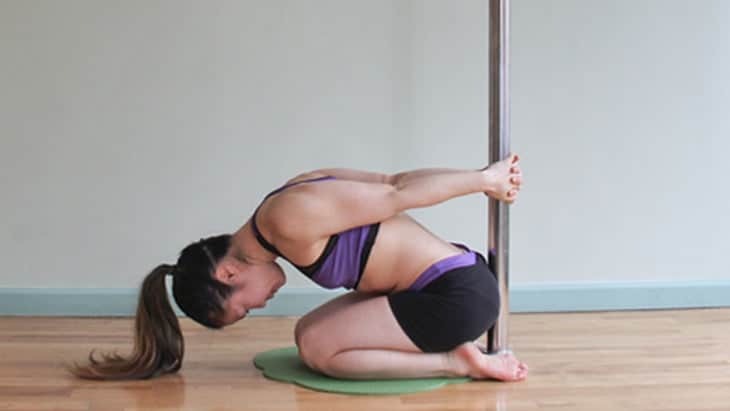
Kneel down the ground. Sit on the heels with big toes touching, then spread your knees just as wide around your hips. Using a cupped hold and a forward-facing head as well as chest motion, stretch back for the pole. Let your neck go.
While you grip the pole over the back, the hands firmly ground you, and the head, as well as chest, push forward, widening the distance from the neck as well as the shoulders.
2. Veerabhadrasana (Warrior 3 pose)
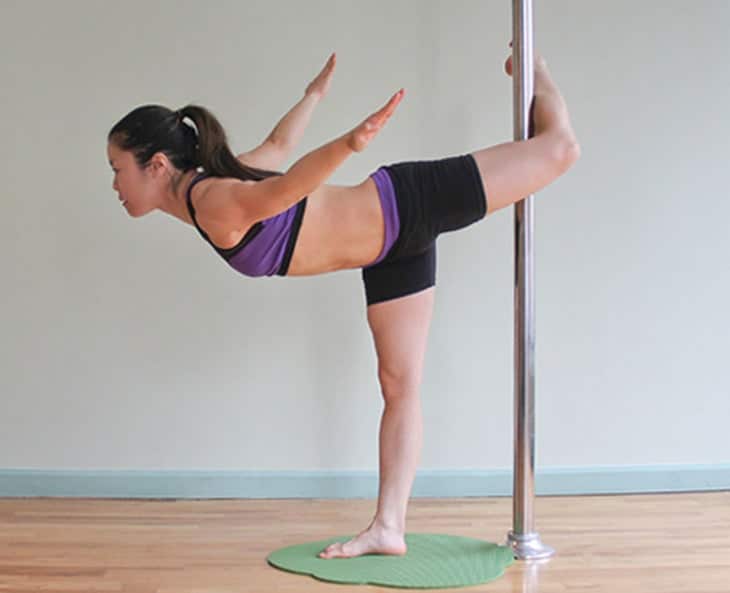
Put your left leg back on the ground in front of the standing leg in the Three-Legged Dog position. Your upright foot stays just in front of the pole as you raise the left leg once more to enter Warrior III. Your left knee is then wrapped around the pole, your shoulders are squared to the front, and your forearms and hands are raised up and toward the sides.
It involves leaning forward while the knee wraps all around the pole to exercise using the thighs, hips, and back.
3. Sirshasana (Head-stand)
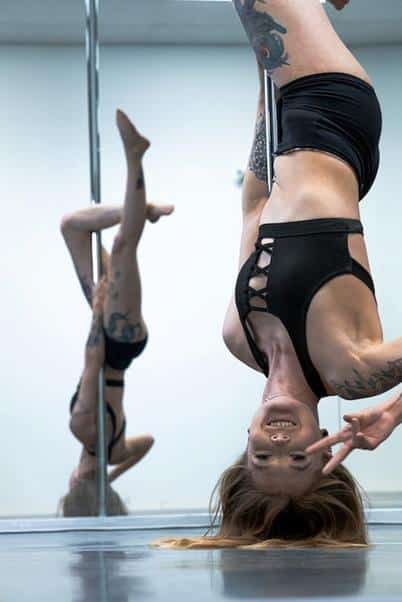
Sirshasana can be performed with a pole with a balance of body and alignment with the pole. The sirshasana can be improved with the support of the pole. A long time standing on sirshasana is possible with the support of the pole for physical benefits.
First, keep your forearms near to the pole and keep your crown of the head in between the palms and then press your feet together on the floor and bend up, and with the support of the back at the pole rise your hips and followed by the legs to perform the sirshasana.
4. Adhomukha swanasana (Downward facing dog pose)
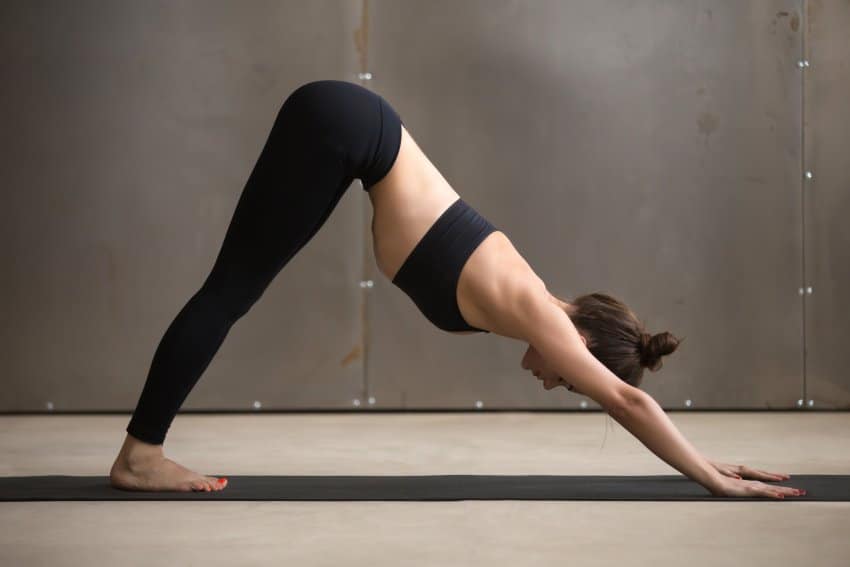
Put the pole across your feet and then get to your hands as well as knees down the ground. Your hands must be just at front of the shoulders, and the knees should be just beneath your hips. Turn the toes under and extend your palms out. Holding the right knee bent and also the heels raised off the ground, exhale while lifting the knees upward. Lift sit bones from the ceiling by lengthening your spine. Wrapping your legs around pole requires you to push your buttocks back and extend your heels towards the ground.
An important tip is to generate a sense of foundation, and wrap feet around base of pole.
5. Natarajasana (Dancing Siva pose)
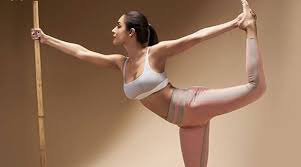
Keep your right ankle straight and rooted to the floor by pressing your right leg bone backward and pulling your knee up to Warrior III. Reach back as well as, with your left hand, hold the pole to stability while maintaining your upright posture. Your knee, calf, as well as ankle, should now be wrapped all around the pole as you reach back using the left leg.
You can practice learning to balance with one foot simply elevating your foot and squaring your legs and shoulders in front by encircling the knee, calf, or ankles around pole.
6. Sarvanga asana (Shoulder stand)
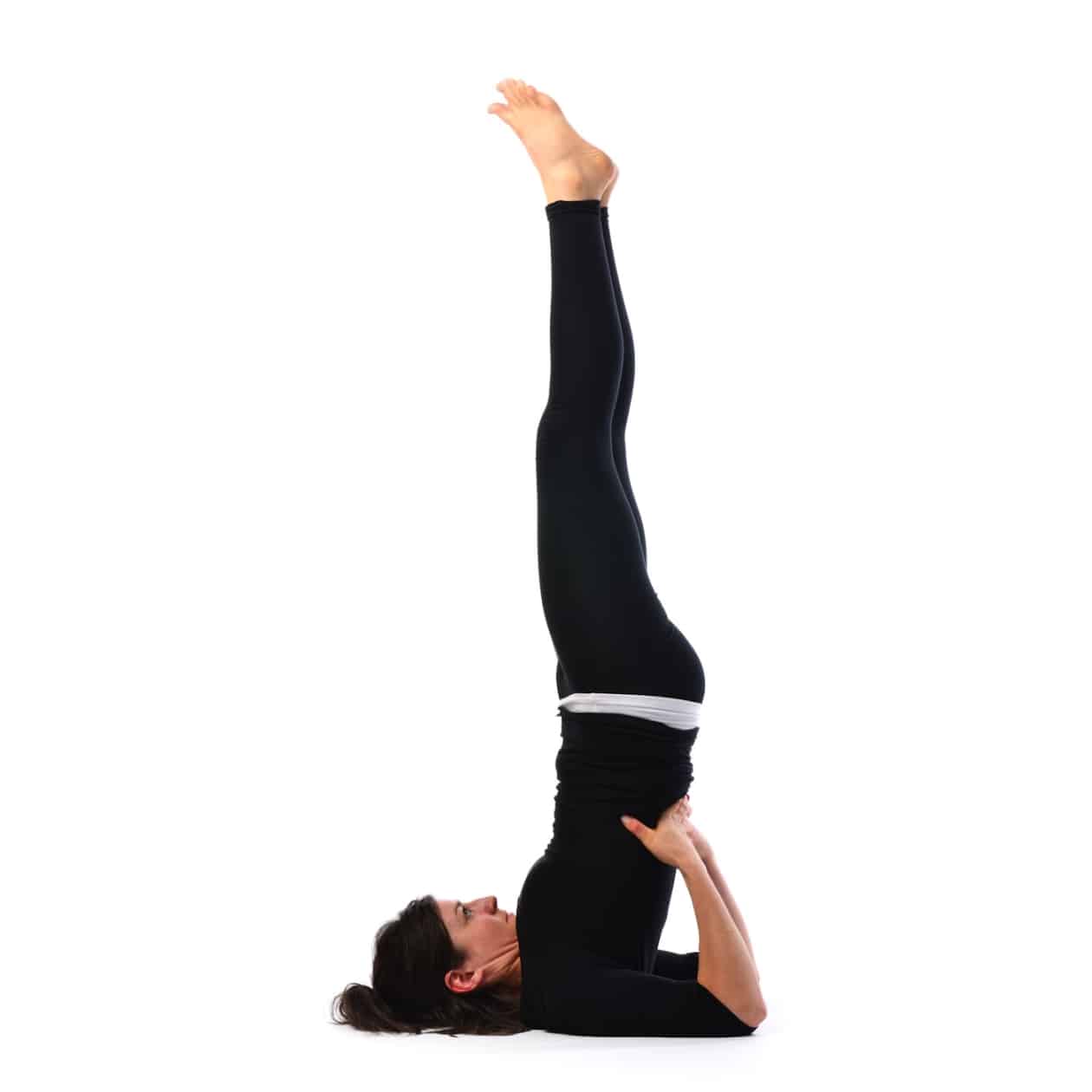
Lay down with your body and legs raising with your back touching the pole. Then slowly come to your shoulder and stand with the support of your hands and the pole. Adjust your back with the pole so that you can raise it to the perfect upright position of the shoulder stand.
7. Ustrasana (Camel Pose)
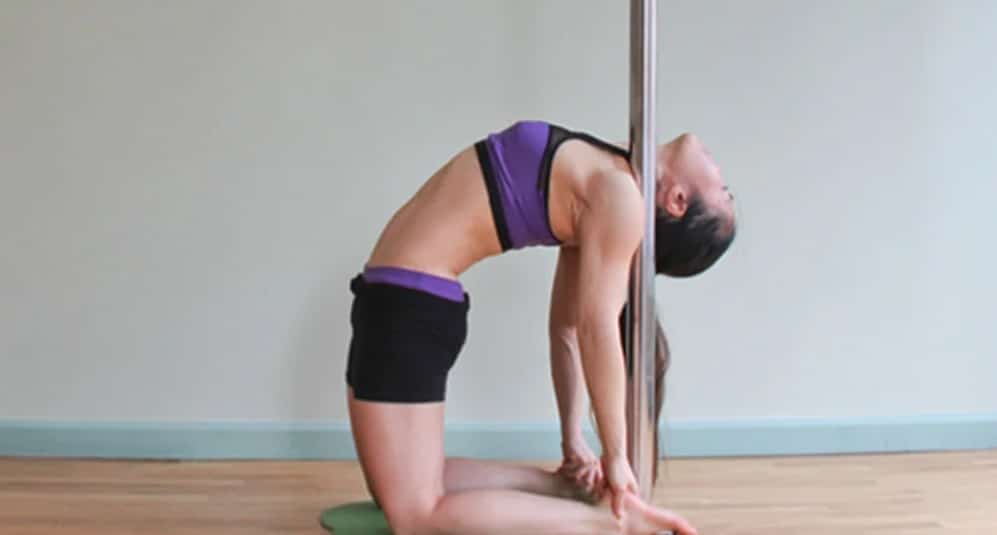
Kneel just on the ground with both thighs parallel to the ground as well as your knees hip-width apart. Firm your hips while rotating the thighs inward. While firmly planting your shins as well as the soles on your feet further into the ground, keep your outside hips as supple as you can. With the palms facing down as well as the bottom of the hands resting on the top of your buttocks, place your hands on the rear of your pelvis. Strengthen your tailbone toward your pubis by lengthening through it. Now, lean back while keeping your hands on your feet as well as your hands contacting your chin. Use the pole to hold your inside elbow by positioning it so that it is aligned over your ankle.
Your shoulder can rest just on the pole, which helps to increase the strain across your pectoral muscles. Additionally, the pole places the shoulder just above the foot for proper alignment.

